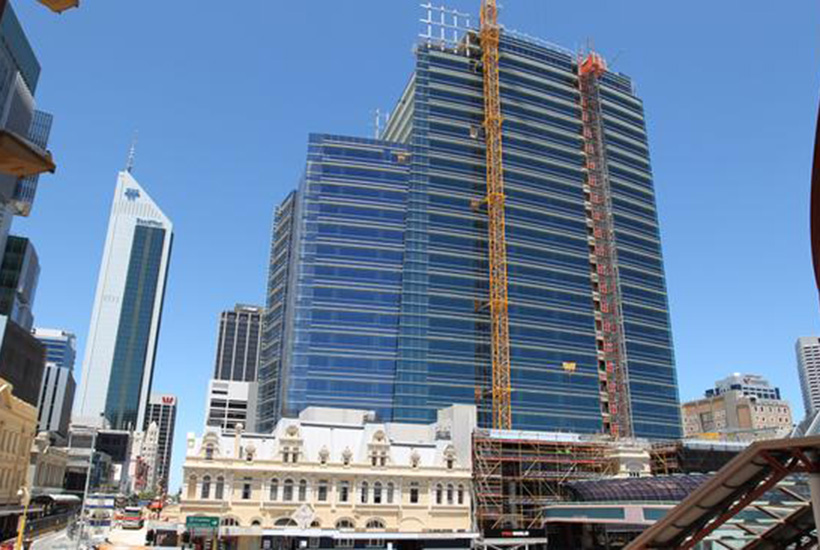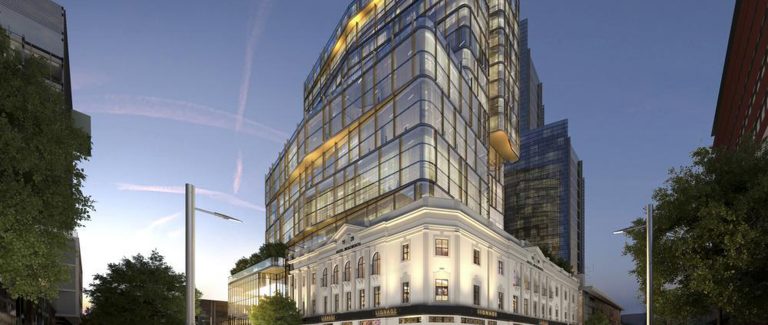Legal saga continues for Perth’s Raine Square project

For Perth developer Luke Saraceni, the past decade has partly been about putting the events of the last global financial crisis behind him.
They returned with a vengeance in a crucial judgment in the WA Supreme Court this week in which his claims against the financiers of the $500 million Raine Square project — one of Perth’s tallest skyscrapers — were almost all rejected.
But the legendary developer, who is responsible for a series of projects around WA, including a recent $100 million proposal to build a Westin resort at Gnarabup Beach in the iconic Margaret River Region, is certainly not giving up.
While experts saw the judgment as a big win for the banks, they were quick to add the words “at this stage”.
The entrepreneur and investment partner Hossean Pourzand took on Bankwest, which was itself taken over by the Commonwealth Bank in the wake of the crisis — with another lender, BOSI, whose Australian arm was taken over by Westpac, also embroiled.
The legal marathon may just be taking a breather and it could have significant implications for the way in which banks treat clients during periods of financial and project stress.
“This is not over by a long shot,” Saraceni told The Weekend Australian.
He will not comment further, but the case shone a light on the tough tactics employed by the lenders as the project faced claims of cost overruns.
The developers argued the banks’ dealings over the Raine Square project, as the reverberations from the financial squeeze hit Perth, derailed what would have been a successful project.
Saraceni has spent close to a decade in litigation. with his unhappiness with the lenders argued out in one of the state’s largest court cases.
The final quantum that remains to be paid to the banks is yet to be determined, but the costs of the case alone could approach $50 million.
The Raine Square stoush prompted a rise to five legal actions in which Saraceni-linked vehicle Westgem Investments and its liquidator took on the banks that financed the development.
Justice Paul Tottle dismissed the main claims, except for a smaller rectification claim, and noted some other claims would be determined at a later hearing.
Westgem sought damages against Bankwest, arguing the project was thrown off course after the lender wrongly twice said it was over budget, lifting borrowing costs, and ultimately cascading into a dispute with builder Salta, which left the job.
Bankwest had claimed Westgem owed it about $200m in unpaid interest and other fees and penalties. Westgem collapsed into receivership in 2011, after missing $50m in repayments to Bankwest and Bank of Scotland, and by 2012 was in liquidation.
Westgem argued Bankwest’s incorrect claims of cost overruns in 2009 drove the collapse and also derailed an early deal that could have seen Charter Hall pick up an interest in the project.
In 2011, Saraceni received a boost in his fight for financial survival when litigation funder IMF Australia bankrolled the action against Bankwest. And it appears to be sticking closely by him.
IMF, now known as Omni Bridgeway, said its investment had a carrying value of approximately $55m.
“This is a highly disappointing result for all of Omni Bridgeway’s stakeholders and one that merits a very detailed review of a complex judgment which is reflective of the decade of litigation,” the litigation backer said, as it shares lost 1.5%.
This article originally appeared on www.theaustralian.com.au/property.







